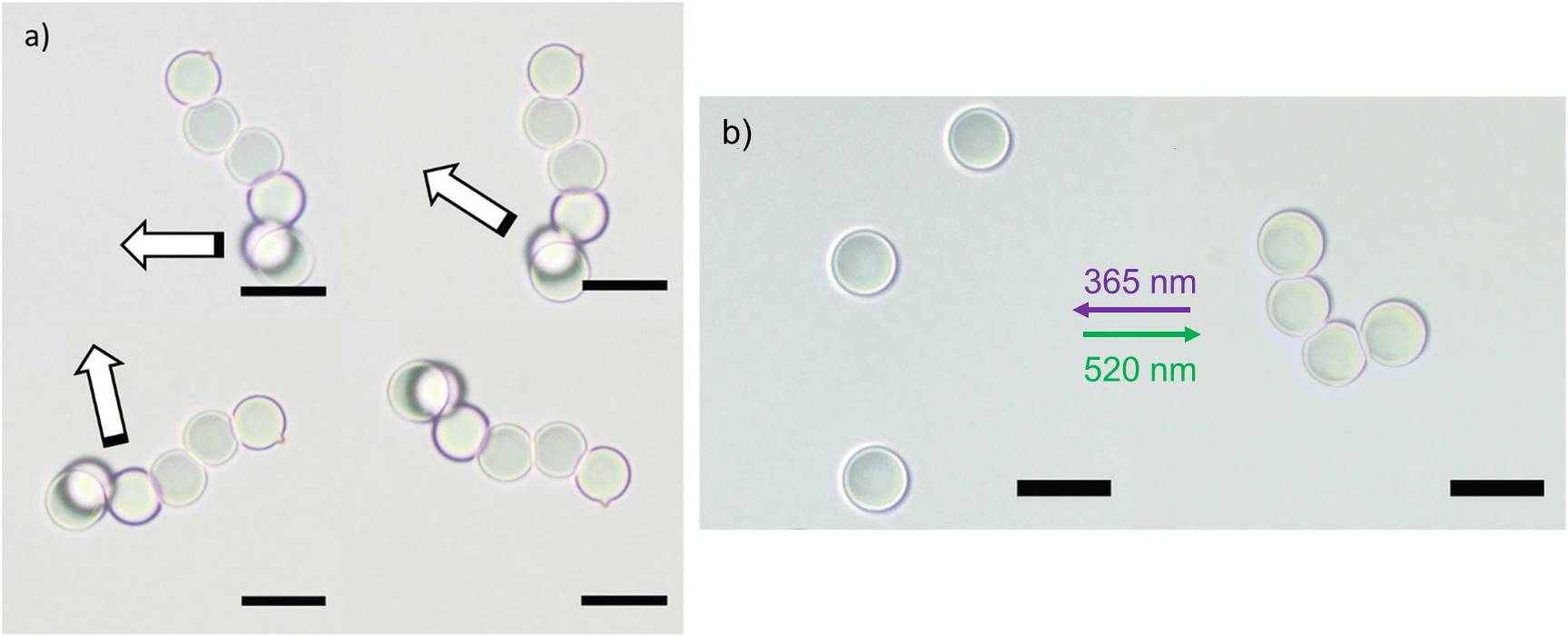Janus is a god in ancient Roman mythology with two opposing faces. Its name has been brought to materials science to label particles with two or more distinct faces as “Janus particles”. Integrating multiple functions into one physical entity, Janus particles with various properties are extensively adopted as catalysts, electronic components and other applications.
Reporting in Chemical Communications, Bart Jan Ravoo and co-workers from Westfälische Wilhelms-Universität Münster in Germany developed a Janus particle colloidal assembly using a sandwich micro-contact printing method, a strategy reported previously by the same group. The Janus particle assembly consists of Janus particle chains, with the structure of one chain illustrated in Figure 1b. The authors first capped a batch of silica micro-beads with tri-block co-polymers on opposing ends (green parts shown in Figure 1). These copolymers serve as arms that extend and attach to functionalized magnetite (Fe3O4) nanoparticles. Two Janus particles will become magnetically glued together if they connect to the same nanoparticle at the two caps. This connection propagates and eventually forms Janus particle chains mainly consisting of two to four particles.
The artificial chains are responsive to an external magnetic field and photons with different wavelengths. Owing to the magnetic nanoparticles, the chains tend to arrange themselves according to the direction of the applied magnetic field. As shown in Figure 2a, the authors successfully rotated a chain by moving around a magnet.
Moreover, radiating the chains using UV light and green visible light will alter the chain configuration. The light sensitivity is rooted in a light-induced isomerization reaction of the co-polymer linkers: green light yields adhesive trans-isomers, whereas UV light produces cis-isomers that detach from magnetite. Hence, dissipation of the chains into individual Janus particles and then rejoining the particles together can be readily accomplished (Figure 2b).

Figure 2. Optical microscopy images showing (a) the magnetic and (b) the photo-switching properties of one Janus particle chain. All scale bars are 10 µm.
The demonstrated assembly is just the tip of the iceberg for Janus particle assemblies. As claimed by the authors, any acrylate in principal can be used to build the co-polymer linkers, resulting in colloidal assemblies with versatile features.
To find out more please read:
Self-assembly of Colloidal Molecules that Respond to Light and a Magnetic Field
Sven Sagebiel, Lucas Stricker, Sabrina Engel and Bart Jan Ravoo
DOI: 10.1039/c7cc04594h
About the blogger:
 Tianyu Liu is a Ph.D. in chemistry graduated from University of California-Santa Cruz. He is passionate about scientific communication to introduce cutting-edge researches to both the general public and the scientists with diverse research expertise. He is a web writer for the Chem. Commun. and Chem. Sci. blog websites. More information about him can be found here.
Tianyu Liu is a Ph.D. in chemistry graduated from University of California-Santa Cruz. He is passionate about scientific communication to introduce cutting-edge researches to both the general public and the scientists with diverse research expertise. He is a web writer for the Chem. Commun. and Chem. Sci. blog websites. More information about him can be found here.


.jpg)








